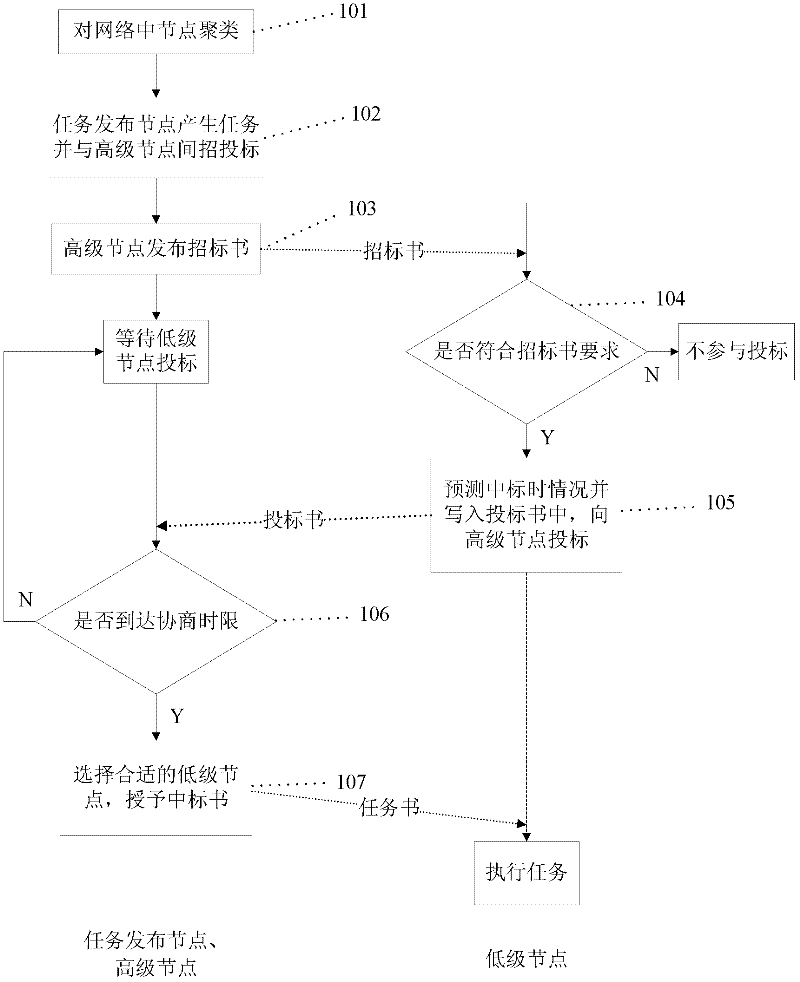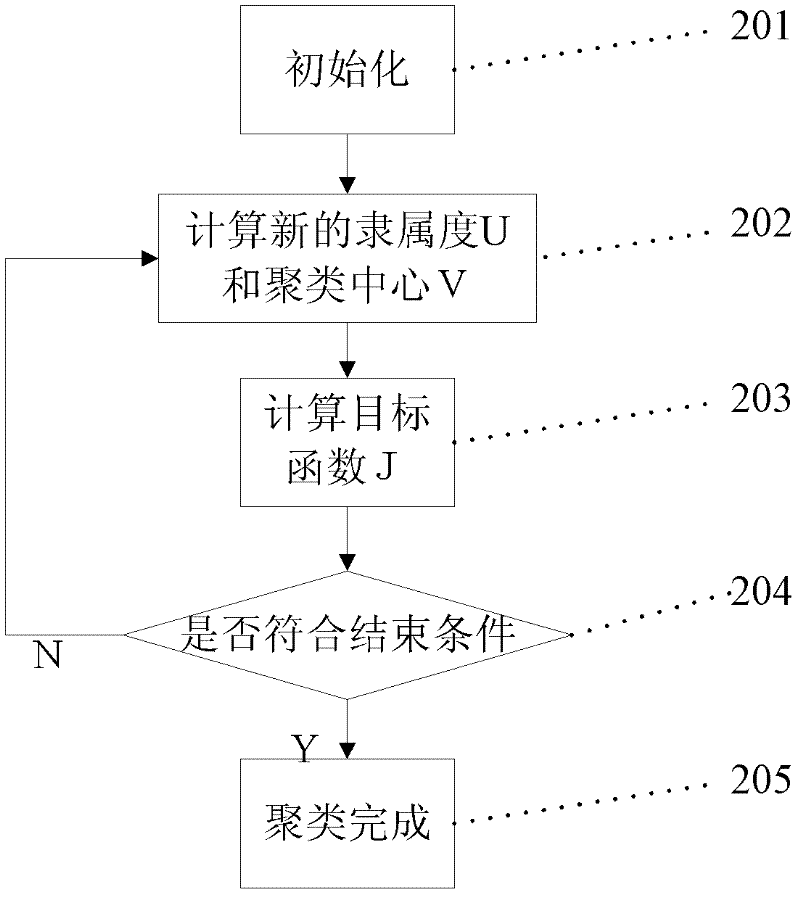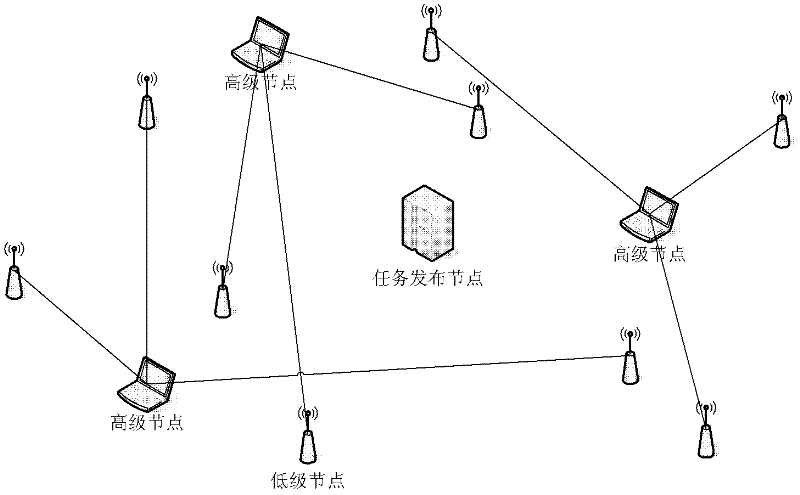Wireless sensor task distribution method based on contract network
A wireless sensor and task allocation technology, applied in wireless communication, network planning, network topology, etc., can solve the problems of increasing network energy consumption, spending a certain amount of time, and increasing the management burden of management nodes, so as to reduce energy consumption and communication conflicts , Improve the effect of completion rate and completion quality
- Summary
- Abstract
- Description
- Claims
- Application Information
AI Technical Summary
Problems solved by technology
Method used
Image
Examples
Embodiment 1
[0078] Embodiment 1 The wireless sensor network task assignment process based on the contract network:
[0079] 1: In this embodiment, a network of 100m*100m is used, and one task release node and 30 common nodes are randomly distributed. These 30 ordinary nodes are clustered into 2 categories using the C-means algorithm: high-level nodes and low-level nodes. The initial energy of each node is 0.5J, and the task release rate obeys the Poisson distribution with a parameter of 1s.
[0080] 2: Set the network to have the following properties: In the sensor network, nodes will not move after deployment; all ordinary nodes are isomorphic, and each node has a unique address; time synchronization between sensor nodes.
[0081] 3: The task publishing node generates and classifies the tasks, and releases the bidding documents to the advanced nodes.
[0082] 4: High-level nodes bid according to the conditions of the low-level nodes they manage.
[0083] 5: The task release node selec...
PUM
 Login to View More
Login to View More Abstract
Description
Claims
Application Information
 Login to View More
Login to View More - R&D
- Intellectual Property
- Life Sciences
- Materials
- Tech Scout
- Unparalleled Data Quality
- Higher Quality Content
- 60% Fewer Hallucinations
Browse by: Latest US Patents, China's latest patents, Technical Efficacy Thesaurus, Application Domain, Technology Topic, Popular Technical Reports.
© 2025 PatSnap. All rights reserved.Legal|Privacy policy|Modern Slavery Act Transparency Statement|Sitemap|About US| Contact US: help@patsnap.com



